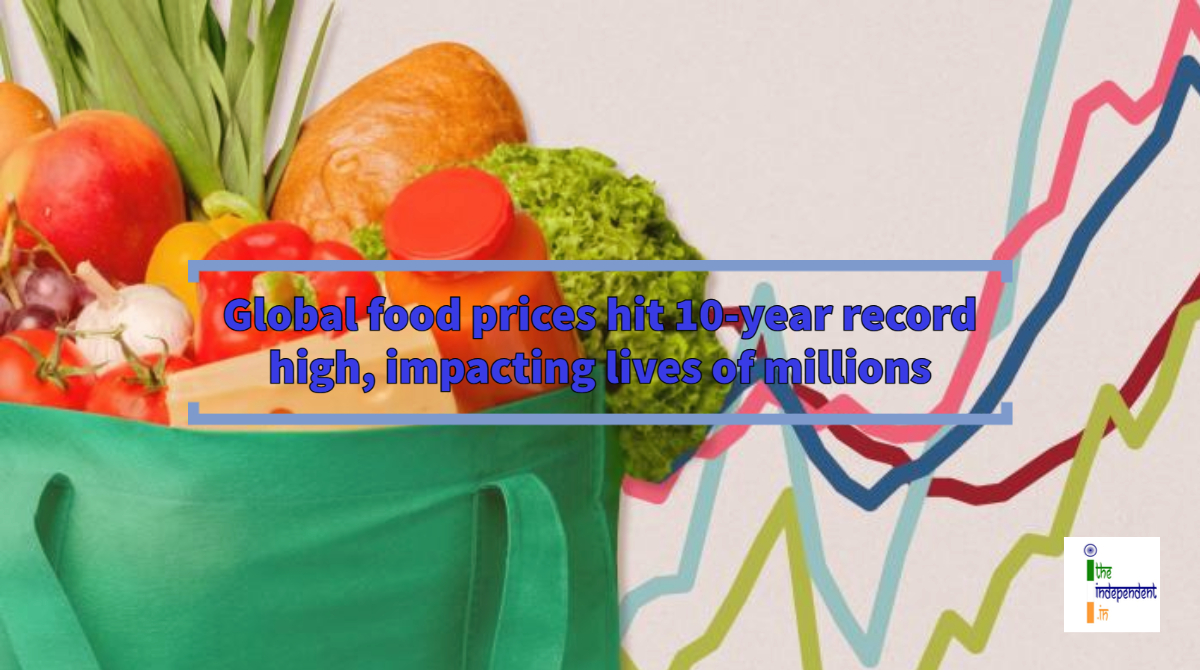
The rising food cost combined with rising energy prices, can impact the livelihood of millions of people globally.
As per the latest figures shared by the United Nations Food and Agriculture Organisation (FAO), global food prices have hit a 10-year high with prices rising more than 30% in the last year.
The FAO Food Price Index climbed for a 3rd straight month in October 2021, jumping 3% from the previous month to reach its highest level since July 2011. The figures also highlight the rising prices of cereals and vegetable oils around the world. While cereal prices increased by 22% over the last year, the vegetable oil prices hit a record high after rising by almost 10% in October 2021.
Factors like high energy price, disruption in supplies, migrant worker shortage, high commodity prices, factory closures and political tensions (post-Brexit issues between U.K. and E.U.) have led to rise in the process.
While the world still battles with COVID-19, the rising food cost combined with rising energy prices, can impact the livelihood of millions of people globally.
One of the major factors that led to the rise in figures, is wheat whose price increased by 40% after major exporters such as Canada, Russia and the United States (U.S.) had poor harvests.
Taking it to twitter, the FAO Newsroom tweeted,
— FAO Newsroom (@FAOnews) November 4, 2021
Global food commodity prices rose for the 3rd consecutive month in Oct, reaching their highest level since July 2011.
Global cereal production poised to hit an all-time high, stocks set to decline.https://t.co/b1ztgiUKMD #foodprices pic.twitter.com/5Z3Hj9dHMk
The official account of FAO Statistics tweeted,
.@FAO Cereal Price Index
— FAO Statistics (@FAOstatistics) November 4, 2021
.
% in October from previous month, with world wheat prices
by
% amid tightening global availabilities due to reduced harvests in major exporters, including
,
&
Learn more inFAO Food Price Index
https://t.co/nKV7gCDoHZ pic.twitter.com/G1Rh0MV9PF
Speaking on the occasion, an Agribusiness expert at Curtin Business School – Peter Batt said, “In the case of cereals, we’re facing a situation where one could say it’s climate change which is ultimately causing falling production.”
The index of vegetable oil prices was increased by the cost of palm, soy, sunflower and rapeseed oils. In the case of palm oil, prices have been driven higher after output from Malaysia was subdued due to ongoing shortages of migrant workers. The unavailability of affordable migrant workers due to Coronavirus (COVID-19) and political issues like Brexit have led to the rise in cost of production and transportation of food in other parts of the world too. Post-Brexit, U.K. is having a severe crunch of lorry drivers to transport goods to E.U. It has also offered to ease the rules so that more drivers take up the job.
The FAO Dairy Price Index rose by 2.6 points from September 2021, influenced by generally firmer global import demand for butter, skim milk powder and whole milk powder amid buyers’ efforts to secure supplies to build stocks. The FAO Sugar Price Index dropped by 1.8% from September 2021, for limited global import demand and prospects of large exportable supplies from India and Thailand as well as a weakening of the Brazilian Real against the U.S. dollar.
Despite an expected record world cereal production in 2021, global cereal inventories are seen heading for a contraction in 2021-22. The forecast for world cereal output in 2021 is now pegged at 2,793 million tonnes, down by 6.7 million tonnes since the previous report in October 2020. This majorly due to cuts to the estimates of wheat production in the Islamic Republic of Iran, Turkey and the U.S.
World cereal stocks by the close of seasons in 2022 are forecast to fall 0.8% below their opening levels, to 819 million tonnes.








